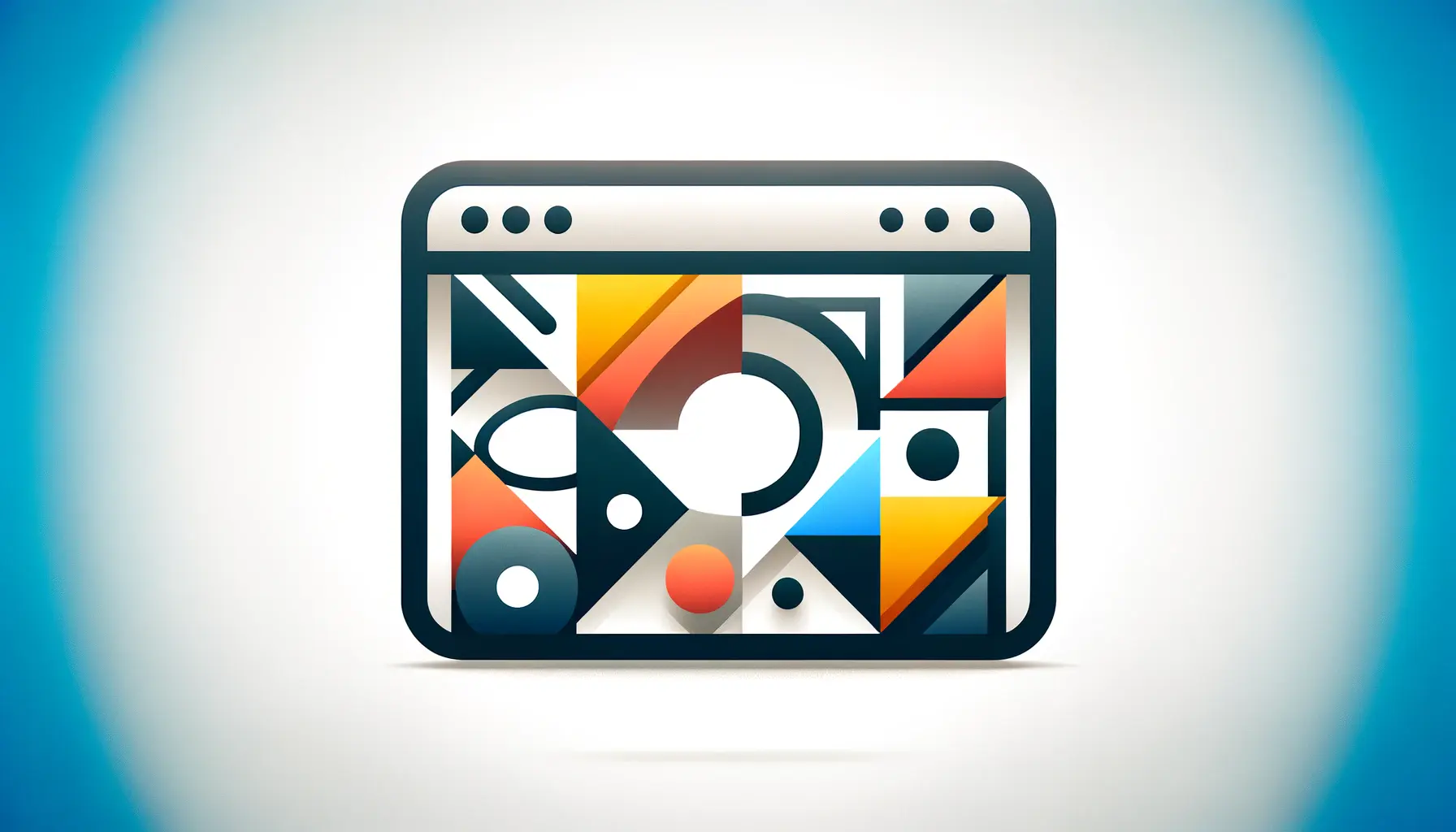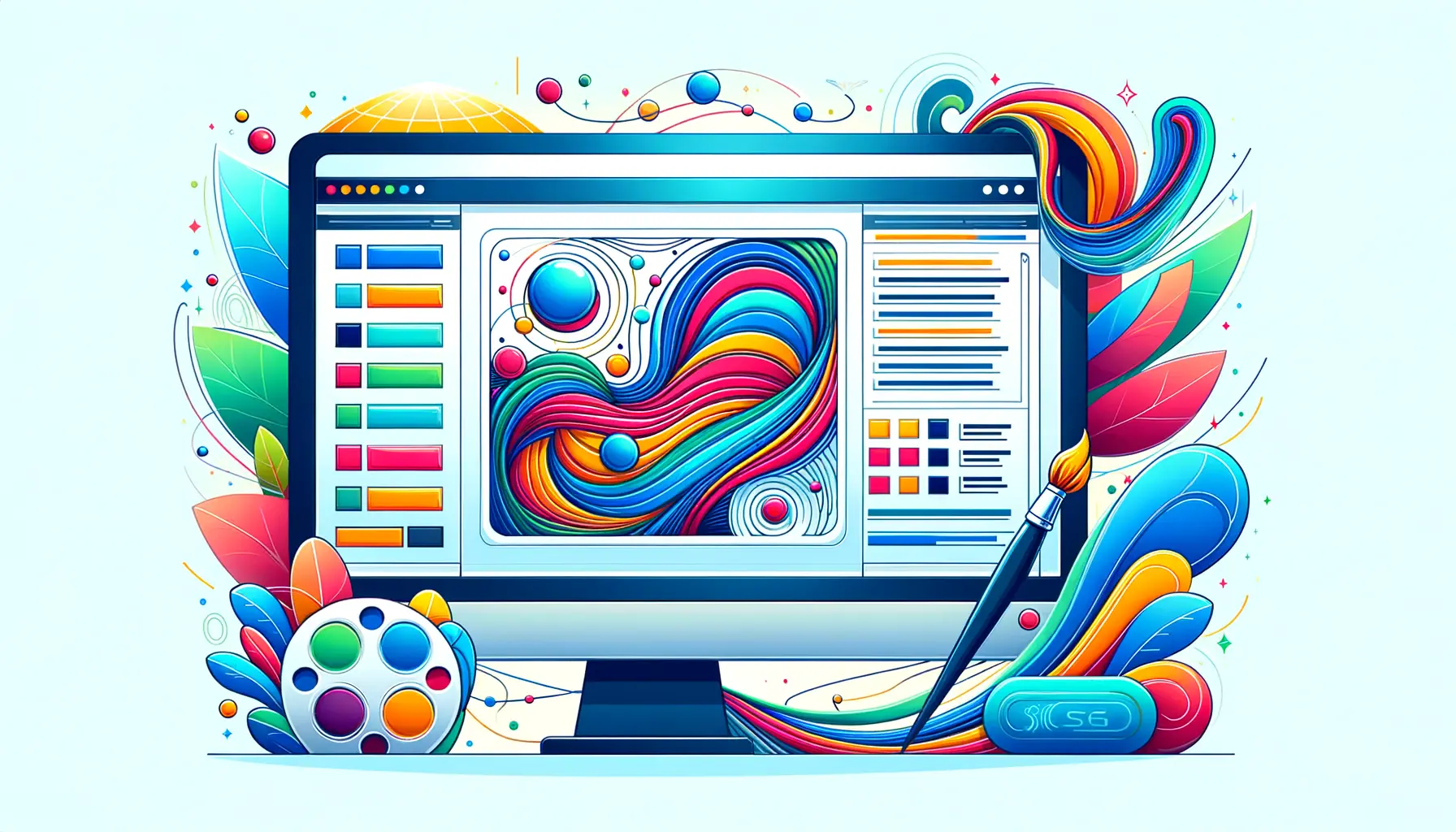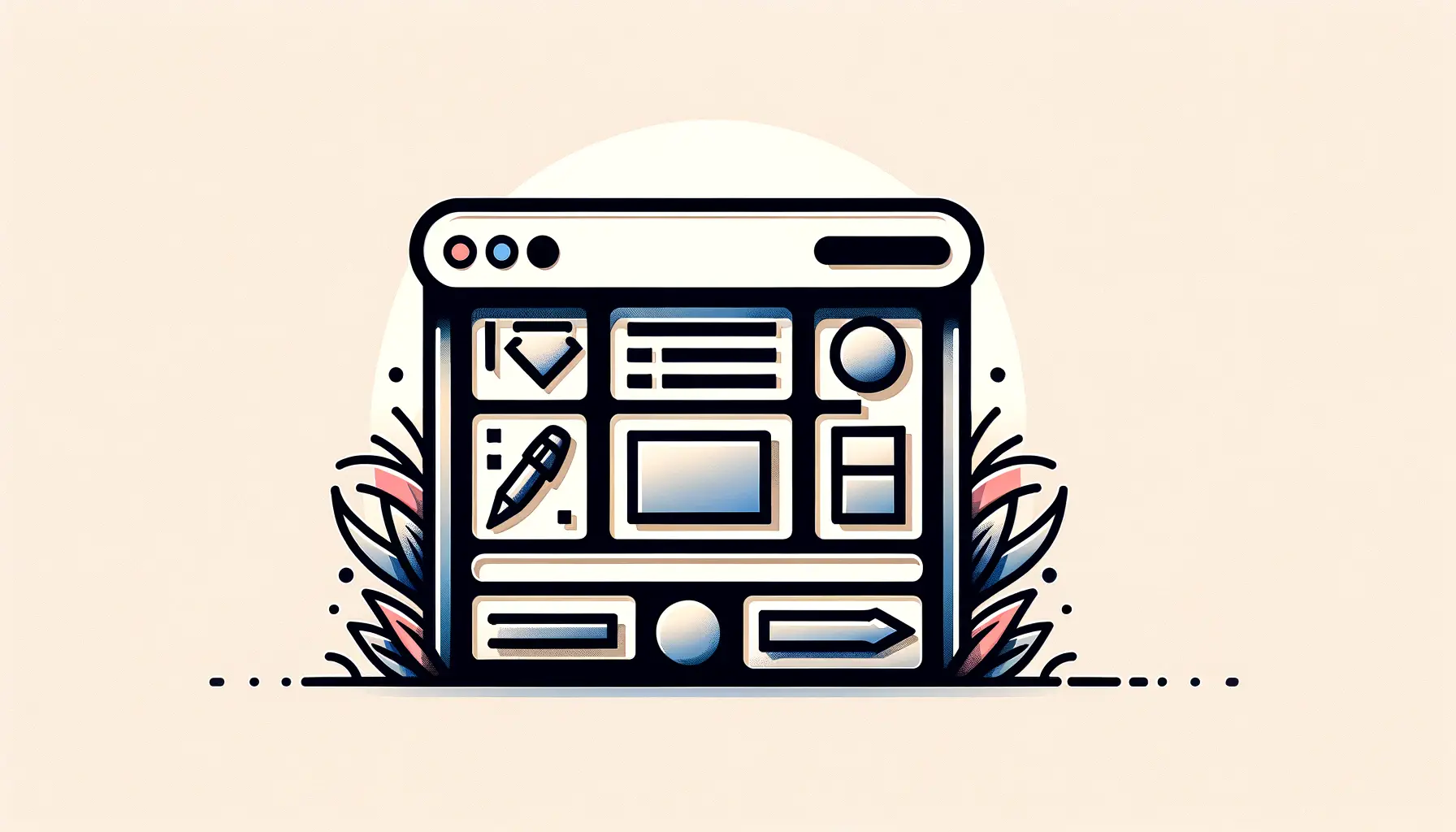When designing a site or developing a visual online experience, image performance and quality can make or break your design.
You’ve probably been faced with the decision of which image format is optimal — do you use SVG over JPG and PNG?
The decision might seem simple, but it has real-world consequences on how fast your site loads, how crisp your visuals are, and how people engage with your content.
In this article, we’ll discuss why you might choose SVG over JPG and PNG, especially if you’re after stylish, scalable, and lightning-fast web design.
Let’s start by breaking down the differences between these popular image formats so that you can make the smartest choice for your next project.
Understanding Image Formats: SVG, JPG, and PNG
Before deciding to use SVG over JPG and PNG, let’s first find out what makes these image formats different.
They all have their strong points, yet their optimum use cases differ based on your design objective.
Let’s break them down so that you can confidently select the most suitable format for each image on your website.
What is SVG and how does it work in web design
SVG (Scalable Vector Graphics) is a form of XML-based graphics that define images as mathematical shapes, not pixels.
This means SVG images can be enlarged to any size with no loss of quality.
They’re perfect for logos, icons, illustrations, and any graphic that needs to look sharp on all screen sizes.
- SVGs are text-based, which means they can be opened up and edited in any text editor.
- They’re vector by nature — no more pixelation on high-resolution screens.
- They load fast and can be styled or animated with CSS and JavaScript.
Differences between raster (JPG, PNG) and vector (SVG)
JPG and PNG are raster formats.
They build an image out of pixels, so they do have native resolutions.
If you enlarge or zoom in on them, their quality suffers.
SVGs are vectors — no pixels, no blur, just sharp lines no matter the size.
- JPG is perfect for photographs or intricate color gradients.
- PNG supports transparency and is perfect for UI elements or icons when SVG isn’t an option.
- SVG shines at clarity, flexibility, and performance.
Common use cases for each image type
Each format has its own strengths.
But knowing when to use SVG over JPG and PNG will save you headaches down the road.
- SVG: Logos, icons, charts, simple illustrations.
- JPG: Photos, large images with high detail and color.
- PNG: Transparent images, flat icons, small UI elements.
Comparison of file size and performance of image types
Website performance matters.
And image formats play a huge part in it.
Performance is one of the biggest reasons to use SVG over JPG and PNG.
Since SVGs are code-based, their file sizes are usually much smaller than high-quality PNGs or JPGs, especially for simple graphics.
And SVGs can be compressed even more without losing any quality.
- SVGs can be quicker-loading than raster images if optimized correctly.
- JPGs can be compressed, but they often lose quality.
- PNGs maintain quality but can become large in file size.
Now that you’ve got a solid understanding of these formats, it’s time to explore why so many web designers and developers are leaning toward SVG over JPG and PNG — not just for aesthetics, but for powerful performance gains.
Choosing the right image format depends on whether you prioritize scalability, quality, or compatibility. SVG works best for sharp, flexible graphics, while JPG and PNG remain reliable for photos and transparency.
Benefits of Using SVG Over JPG and PNG
If you’re aiming for high-performance, scalable, and visually sharp websites, then choosing SVG over JPG and PNG is a smart move.
While JPG and PNG have their place, SVGs offer some serious advantages that align perfectly with modern web design trends.
Let’s explore why SVGs are becoming the preferred choice for developers and designers alike.
Scalability without quality loss
One of the biggest advantages of SVG over JPG and PNG is that SVGs can be scaled to any size without pixelating or blurring.
This makes them ideal for responsive design, where items need to adapt to various screen sizes — from smartphone screens to massive desktop monitors.
With SVGs, your graphics will never look fuzzy, no matter what resolution.
- Ideal for high-DPI (Retina) displays
- No multiple design versions of a single image necessary
- Consistent visual experience on every device
Better performance on responsive sites
SVG files are usually smaller than JPG or PNG equivalents, especially for simple graphics like icons or logos.
Smaller files mean faster loading times, which has a direct impact on your SEO and user experience.
Google even considers page speed when ranking websites — another reason to utilize SVG over JPG and PNG.
- Faster page load times
- Reduced server bandwidth usage
- Improved Core Web Vitals scores
Lighter file sizes for speedy loading
In contrast to JPGs and PNGs, which are made up of pixel data, SVGs are made up of code.
Therefore, they are very light in weight, especially after minification.
Optimized properly, a simple SVG logo would be just a few kilobytes — much lighter than even a compressed JPG or PNG.
And because they’re text, SVGs can also be GZIPA compression method that reduces file size for faster web delivery.-compressed.
- Light and neat code
- Ideal for icons, UI components, and illustrations
- Compress even more using GZIP or SVG optimizers
Improved SEO and accessibility features
SVGs do carry title and description tags, which are read by search engines so that they can determine what an image is showing.
That’s a possible SEO benefit you gain that JPG and PNG just can’t compete with.
Screen readers will also speak out SVGs, if properly annotated, so that your website is more accessible to disabled people.
- Supports semantic markup and metadata
- Improved integration with ARIA roles for accessibility
- Contributes to a more inclusive web experience
From stunning scalability to lightning-fast performance, there are many reasons why designers prefer SVG over JPG and PNG.
In the next section, we’ll talk about situations where SVG might not be the best fit — because even SVGs have their limits.
SVGs shine in modern web design thanks to their scalability, performance advantages, and SEO benefits. They’re especially powerful for responsive, high-performing sites with lightweight visuals.
When SVG May Not Be the Way to Go
Even though replacing JPG and PNG with SVG has many benefits, you need to know that SVG over JPG and PNG isn’t a cure-all.
There are some situations where JPG or PNG would actually be the better choice.
Knowing these limitations will enable you to make better-informed design decisions and avoid pitfalls when working with images for the web.
Limitations with complex imagery and photography
SVGs are great at simple graphics but terrible at detailed, complicated pictures like photos.
Since SVGs are based on paths and shapes instead of pixels, making an SVG photo results in bloated files that take an eternity to load and make browsers crash.
In those cases, using JPG over SVG is usually the more practical and efficient choice.
- Photos and images with details are best saved as JPGs
- SVG conversion of intricate graphics can bloat file size
- Huge SVGs can decelerate site performance and responsiveness
Browser compatibility and rendering issues
SVG is supported by most modern browsers, although rendering can differ slightly between browser engines.
Some SVG functionality such as filters, animations, or gradients can behave unexpectedly in older browsers or legacy devices.
Testing how your SVGs appear in all of the main browsers is crucial if you’re creating for a broad audience.
- Not all CSS and JavaScript interactions work with SVGs in the same way
- Legacy Internet Explorer has partial SVG support
- Fonts and text in SVGs may display differently across operating systems
Limited support in some email clients
Email marketing is still an important tool for most businesses.
Unfortunately, some of the popular email clients — including Outlook and some mobile apps — don’t yet support SVG rendering.
In these situations, it’s best to use PNG over SVG to achieve broader compatibility and a consistent render in every inbox.
- Use PNGs for icons and logos in email templates
- Preview emails across clients before finalizing design
- Inline SVGs can be removed or blocked for security purposes
Security issues with inline SVGs
Because SVG files can contain scripts and embedded code, they can represent security vulnerabilities if they are not sanitized.
Malicious scripts can be injected into SVGs by attackers, which can result in cross-site scripting (XSS) flaws.
That’s why you must always sanitize SVG files before uploading them and never accept SVGs from untrusted sources.
- Always optimize SVGs using tools like SVGOMG or SVGO
- Never allow uploads of user-generated SVGs without validation
- Restrict embedded scripts and JavaScript within SVGs
File editing difficulty for non-designers
While developers love the flexibility of SVGs, they can be intimidating to non-designers or content managers.
Unlike JPGs or PNGs that can be edited easily in standard editors, SVGs usually require design software or editing code directly.
It’s a hindrance to workflow if your team lacks experience with SVG editing workflows.
- SVGs require specialized tools such as Illustrator, Figma, or code editors
- May not be ideal for quick edits by non-technical users
- More complex SVGs can be difficult to debug or style
Knowing the limits of when to utilize SVG over JPG and PNG means not only are you choosing the best format — you’re also avoiding the potential for performance and compatibility problems later on.
Coming up, we’ll cover how to optimize SVGs for top-notch performance and easy integration across your site.
SVGs aren’t the best choice for everything. For complex photos, legacy browser support, and email marketing, JPG or PNG might be more appropriate to ensure compatibility and performance.
Optimizing SVG for Web Performance
If you’re already leaning towards SVG over JPG and PNG, that’s a good start — but if you want to really get the most out of SVGs, you need to be able to optimize them properly.
SVGs can do a lot, but unoptimized, even they can slow down your site or cause unexpected issues.
In this section, we’ll walk you through the best ways to optimize SVGs for performance, flexibility, and compatibility across the web.
Best software to create and compress SVG files
Creating lean and lightweight SVGs starts with using the right design tools.
Tools like Adobe Illustrator, Figma, and InkscapeAn open-source vector graphics editor used to create or edit SVG files. allow you to export optimized SVGs.
But even after exporting, additional optimization is needed to reduce file size and remove unnecessary code.
- SVGOMG: A web app based on SVGO for cleaning and compressing SVGs
- SVGO: Command-line program for advanced SVG optimization
- Figma: Good for exporting new, web-friendly SVG code
Cleaning and minifying SVG code
SVGs can contain a lot of unnecessary code — unused metadata, editor tags, duplicated IDs — which bloats the file.
Minifying and cleaning out that code not only reduces file size but also makes your SVGs more maintainable and style-able.
You can select what gets removed using tools like SVGOMGA web-based tool used to optimize and clean SVG files by removing unnecessary code., giving you total control over the final output.
- Remove unused layers, titles, and comments
- Strip editor metadata like Inkscape or Illustrator tags
- Minify path data and merge groups
Embedding vs linking: what’s best for SEO
By using SVG over JPG and PNG, you can either inline the SVG within your HTML or reference it as an external file.
Inlining gives you greater styling and animation control, and is slightly more efficient for small graphics.
Linking is better, though, for reuse and browser caching.
- Embedded SVGs: Suitable for icons and inline illustrations with dynamic styling
- Linked SVGs: Perfect for large images that are reused
- Both are SEO-friendly and accessible when properly tagged
Using CSS and JavaScript with SVGs successfully
One of the strongest advantages of SVG over JPG and PNG is that SVGs can be styled and manipulated with CSS and JavaScript.
You can animate icons, change color on hover, or even create interactive charts — all without reloading an image.
- Use CSS classes to style SVG elements
- Use SMIL or JavaScript libraries like GSAP for animations
- Use
viewBoxandpreserveAspectRatioattributes for responsive design
Cross-browser support tips
SVG support is solid in modern browsers, yet the look may vary slightly depending on how the SVG has been written.
To get your graphics to look consistent, keep the markup clean and test across devices frequently.
- Avoid using overly complicated SVG structures or nesting
- Test font embedding to ensure they render correctly on all systems
- Utilize fallbacks (such as PNG) on legacy systems when needed
By taking the time to optimize your SVGs appropriately, you allow them to perform at full capacity — balancing performance, adaptability, and aesthetics.
Moving forward to the next section, we’re going to demonstrate how to choose the perfect image format for each component of your web project based on both functionality and design.
To get the best results from SVGs, use tools like SVGOMG or SVGOA command-line tool that compresses and cleans SVG files for better performance., clean the code, and apply CSS or JavaScript for dynamic styling. A clean SVG boosts both speed and interactivity.
Choosing the Right Format for Your Web Project
Now that you have the advantages and disadvantages of each image type, it’s time to figure out when to use SVG over JPG and PNG — and when not to.
The secret is to match each image format with your content’s purpose, your performance needs, and your users’ requirements.
Let’s walk through how to choose the best image format for each part of your website.
Evaluating design needs and performance goals
Start by thinking about what the image is meant to do.
Is it for decoration, use, or information?
Does it need to resize or animate?
Are you trying to keep load times minimal?
These questions help you decide if SVG, JPG, or PNG is best for the job.
- SVG: Most appropriate for responsive UI elements, logos, and illustrations
- JPG: Best suited for photographs and detailed images with gradients
- PNG: Best suited for images requiring transparency or a sharper image
Blending formats: when and how to merge SVG, JPG, and PNG
You don’t have to use a single format.
The best sites are actually a smart mix of all three.
Using SVG over JPG and PNG for crisp, scalable graphics and reserving JPG or PNG for complex visuals helps you balance performance and quality.
- Use SVGs for icons, illustrations, logos, and UI controls
- Use JPGs for big banners, background images, and product images
- Use PNGs for transparent objects, screenshots, or print resources
Websites employing SVG effectively
Modern sites like GitHub, Stripe, and Shopify rely heavily on SVG over JPG and PNG for performance and visual cohesion.
They use SVGs for logos, UI icons, loading animations, and interactive graphics.
Their visuals stay sharp on any display and their load times stay lightning quick.
- SVGs for interactive navigation icons and graphic use
- Uniform branding on all devices without duplicated image sets
- Animation-ready assets that provide superior user experiences
Developer and designer workflow issues
With SVG over JPG and PNG, collaboration between developers and designers becomes easier.
Designers can export clean SVGs, and developers can tweak the code directly without needing to open a design file.
This reduces bottlenecks and speeds up deployment.
- SVGs are easy to version control and modify in code
- Designers can provide scalable, responsive assets natively
- Shared SVG icon libraries simplify asset management
Checklist to select the optimal image format
Not sure what image format to use?
Here’s a simple checklist to help you decide whether to use SVG over JPG and PNG for your visual assets:
- Need to scale up without losing quality? Use SVG.
- Is the image a photograph or highly detailed? Use JPG.
- Do you need transparency? Use PNG or SVG.
- Do you need animation or interaction? Use SVG.
- Are you targeting email clients? Use PNG or JPG for reliability.
By determining your design intent and performance needs, you can make smart decisions about when to use SVG vs.
JPG and PNG — and when another format will be better suited.
The right image format improves not just the look of your site, but also its performance and user interaction.
Smart websites use a blend of image formats. SVGs for UI and icons, JPGs for complex visuals, and PNGs for transparent assets create a flexible and optimized media strategy.
Taking the Smart Path: SVG vs. JPG and PNG
Understanding the Significance of Selecting the Right Image Type
Selecting the ideal image format for your website is not just a technical decision — it’s a strategic one.
In this article, we’ve explored the pros and cons of using SVG, JPG, and PNG formats.
Whether you’re focusing on performance and scalability, visual quality and aesthetics, or accessibility, the decision to use SVG over JPG and PNG can be the determining factor for your site’s success.
Why SVG Stands Out in Modern Web Design
SVG over JPG and PNG is increasingly gaining support for some very compelling reasons.
It offers unmatched scalability, cleaner code, lighter file sizes for simple graphics, and support for smooth animation and easy styling.
These advantages align perfectly with the needs of modern, responsive, high-performance, and interactive websites.
SVGs work best for:
- Logos and branding that must remain sharp on every screen
- User interface buttons and icons requiring interactivity
- Infographics and diagrams enhanced by responsiveness and animation
Being Able to Know When Not to Use SVG
No format is perfect for every situation.
JPG is still the top choice for photography and complex graphics, while PNG is great for images needing transparency and crisp definition.
Knowing when not to use SVG over JPG and PNG is just as important as knowing when to use it.
Stick with JPG and PNG in cases like:
- High-resolution photos and graphics-heavy designs
- Email clients that lack SVG support
- Scenarios involving user-uploaded content with potential security risks
Bringing It All Together
Choosing between SVG vs.
JPG and PNG doesn’t always have to be an either-or decision.
The most effective web projects combine formats with clear goals.
When optimized properly, SVGs can dramatically improve your site’s speed, appearance, and overall user experience.
Meanwhile, JPGs and PNGs remain essential tools in every designer’s arsenal.
Here’s a quick recap to guide your image format selection strategy:
- Use SVG for interactive, scalable, lightweight graphics.
- Use JPG for high-resolution, detailed visuals and backgrounds.
- Use PNG when you need sharp detail and transparency.
The Future Is SVG-Driven
As the web becomes more responsive, visually engaging, and user-centered, SVG over JPG and PNG stands out as the go-to format for designers and developers.
Whether you’re launching a landing page or scaling a large web application, implementing SVG can give your site the edge with faster load times, crystal-clear visuals, and seamless adaptability.
Start small, test your results, and bring SVG into your design and development workflows.
It’s more than just choosing file types — it’s about future-proofing your visual content and delivering a polished, high-performing experience your users will love.
Using SVG isn’t about replacing JPG and PNG completely — it’s about leveraging the strengths of each format based on use case, performance needs, and design goals.
Quality web design is key for a great website! Check out our service page to partner with an expert web design agency.
FAQs on When to Use SVG Over JPG and PNG
Some of the most common questions arise when deciding between SVG over JPG and PNG in web design.
These FAQs will help you understand when and why you should choose SVG for your projects.
Use SVG when you need crisp, scalable graphics like icons, logos, or drawings that retain quality on any screen resolution and support interaction or animation.
No.
SVGs are typically smaller for simple graphics but can be larger than JPG or PNG if the image is highly detailed or complex.
No, SVGs are not ideal for photos.
For photo-based or image-heavy content, use JPG or PNG, which handle pixel-based visuals more effectively.
Yes, modern browsers support SVG.
However, rendering may vary slightly, and older versions of Internet Explorer offer limited or no support.
SVGs display at high resolution without loss of quality, making them perfect for responsive designs that scale across many screen sizes, including high-DPI displays.
Optimized SVGs typically load faster than JPG or PNG because they are lightweight and text-based, especially for UI elements and vector graphics.
Yes, as long as you sanitize SVGs to remove malicious code.
Avoid uploading unverified SVGs from unknown sources to prevent potential security threats.
Yes.
SVG elements can be styled and animated using CSS or JavaScript, enabling dynamic, interactive effects not possible with JPG or PNG formats.
SVGs can improve SEO by allowing semantic tags and accessible elements like titles and descriptions that search engines and screen readers can interpret.












